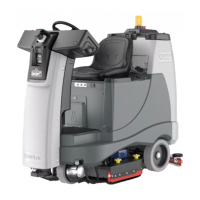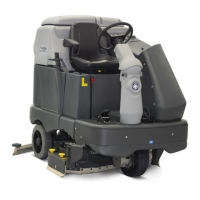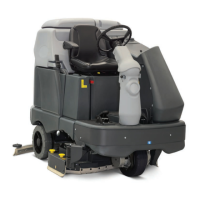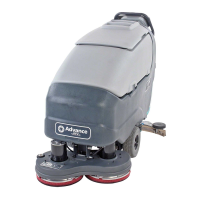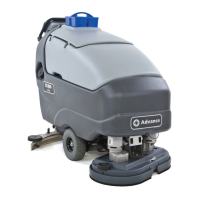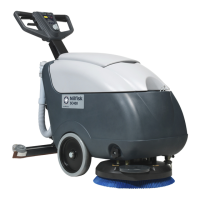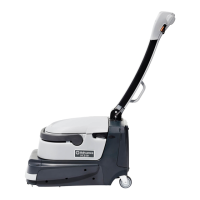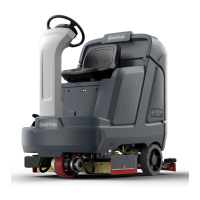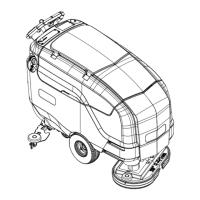49Service Manual – SC6000 20 - Wheel System, Traction
Drive Controller
The KSI relay provides logic power to the drive controller. When the main machine controller is not
energizing the KSI relay, the drive controller has no power. However, the drive controller has control of its
own power relay (K3). This provides separate high-current power output for the motor control. The drive
controller also monitors the E-stop switch and seat switch, so that either one can disable the drive output.
Output is disabled if either the seat switch or E-stop is open. The drive controller also receives many of its
operating parameters from the main machine controller.
The motor contains an electromechanical brake, that releases only when power is present. The drive
controller releases the brake when the wheel motor is commanded to turn.
E2 Main Control Board
E4 Wheel Drive Controller
K1 KSI Relay
Control
K3 Relay
Control
Power
CAN Bus
3Ø PWM
Temp/Pos
Feedback
Foot Pedal
Main Battery Power
Wheel Motor
E-Stop Switch
Brake
The drive motor is controlled from a Curtis 1232E drive controller, which is an AC induction motor controller
for battery operated equipment. The controller generates a square wave, 3-phase, pulse-width-modulated
output to the motor. The speed controller is designed specically for DC
motors with remote commutation. Pulse-width-modulation (PWM) is a
form of motor speed control that alters the power to a motor by rapidly
turning the power on and off. The ratio (also called “duty cycle”) between
the On and Off states determines how much power the motor receives.
The shorter the “off-time” the closer to full power the motor will receive.
This switching occurs so fast (15kHz for this controller) that the motor
simply sees it as a reduction in power (voltage) instead of the rapid on/off.
PWM is a standard motor control technique because it is easier to turn
power all the way on and all the way off, than it is to vary the magnitude
of the power. Varying the magnitude would create a lot of heat that
would need to be dissipated.
25% PWM Duty Cycle
50% PWM Duty Cycle
75% PWM Duty Cycle
100% PWM Duty Cycle
1-Cycle
(15kHz)
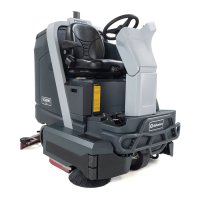
